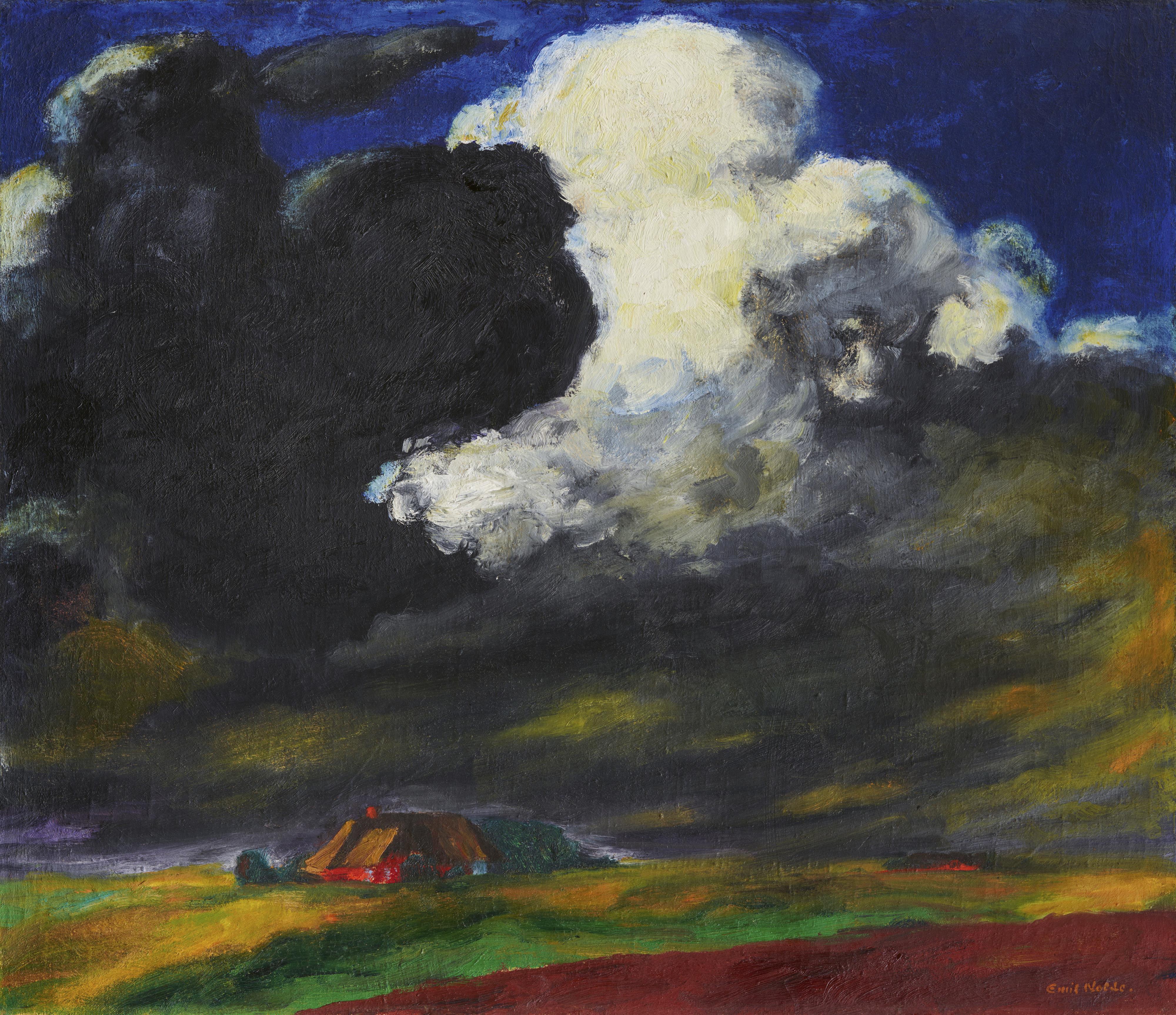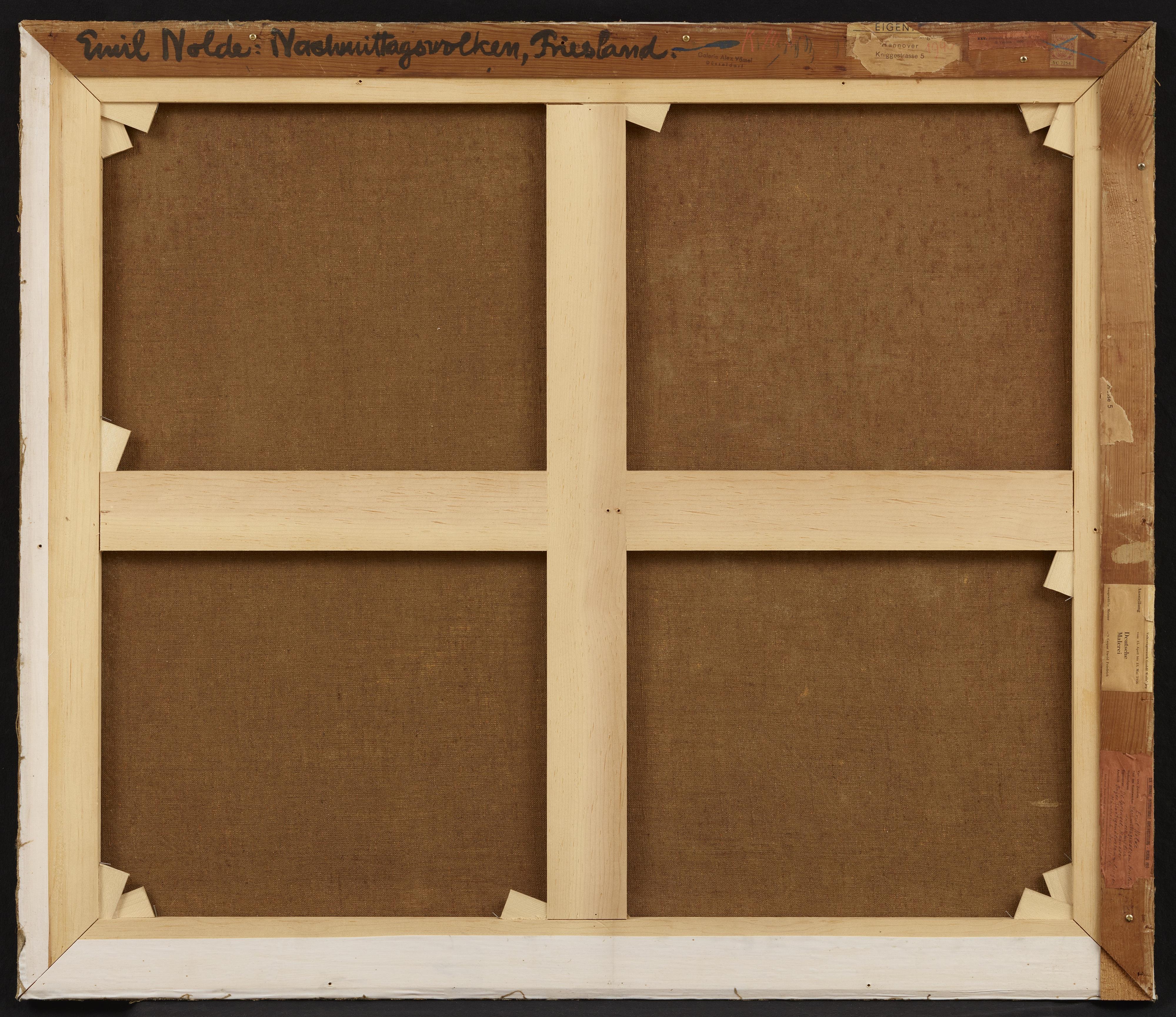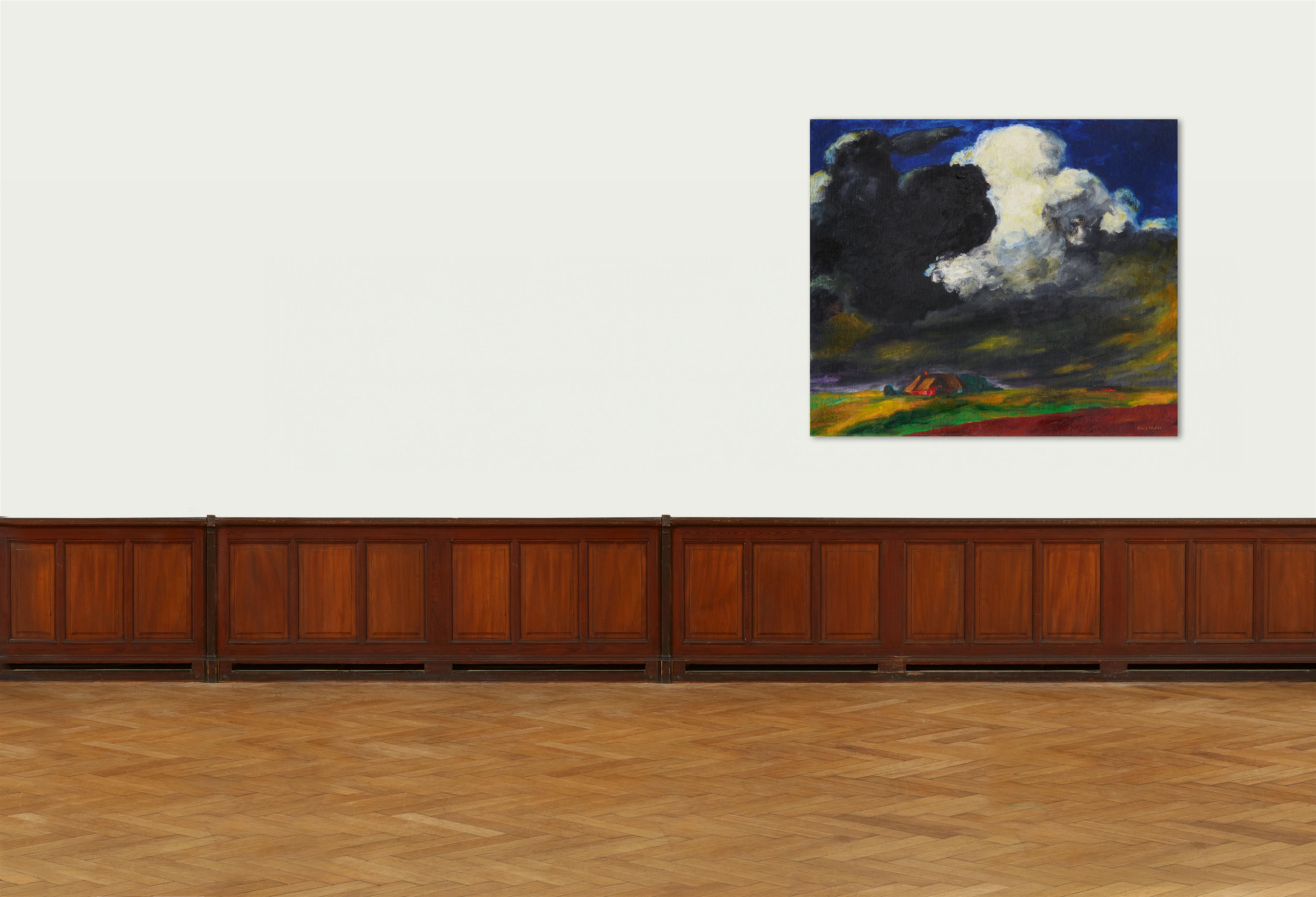Emil Nolde
Nachmittagswolken, Friesland
1940
Oil on canvas. 86.2 x 100.2 cm. Framed. Signed 'Emil Nolde' in orange lower right. Additionally signed and titled 'Emil Nolde Nachmittagswolken, Friesland' verso on stretcher. - In very good condition with fresh colours. Slight craquelure in the dark areas.
Towering, contrasting clouds cast long shadows across the flat land and herald a gigantic storm. This is how the painter Emil Nolde experienced his native landscape in the North Frisian community of Seebüll – a stretch of land between the sea and the mainland featuring broad plains, tree-covered terps and isolated farmsteads. Nolde’s close bond with nature also becomes clear in his autobiographical texts, where he writes: “Our landscape is modest, far from everything intoxicating or luxuriant – we know that, but it rewards its intimate observer’s love for it with an endless abundance of quiet, heartfelt beauty, austere grandeur and also stormily wild life” (Emil Nolde, Reisen, Ächtung, Befreiung, Cologne 1967, p. 9).
This is the landscape of his childhood, and he retained a close bond with it through the places he lived and his art. He had already created his first landscapes in 1892, in Switzerland and on his parents’ farm: mostly topographically precisely drawn views of his rural surroundings (cf. Emil Nolde. Die Landschaften, Cologne 1993, p. 4). But Nolde would not have become one of the leading expressionists if he had continued to faithfully reproduce his visual experiences. From at least 1916, when he moved to the farmhouse Utenwarf, he painted his landscapes according to his personal sensibility, simplifying what he saw and intensifying it by means of his bold use of colour. Taking the vibrant green tones of the pastures, the lush yellow of the rapeseed fields, the blue of the rivers and sluiceways and the red of a setting sun as his starting point, he has transformed his North Frisian landscape into a dramatic sea of colour. Martin Urban writes that, between Utenwarf and Seebüll, Nolde found a landscape which “promised to fulfil a desire that belonged to the fundamental experiences of German expressionism: the yearning for a merging of self and cosmos, the pursuit of the ‘primal states’ of human life” (Martin Urban, Emil Nolde - Landschaften, Cologne 1969, p. 29).
The painting offered here, “Nachmittagswolken, Friesland”, captivates us with its powerfully expressive shades of blue, green and yellow, its black and white and its impasto brushwork. However, the actual protagonists are the clouds, who cast their shadows along the ground like gigantic hands, furnishing it with a constantly shifting face: “On the flat land,” writes Nolde “they [the clouds] are the terror of weak spirits and, for the strong one, an experience in drama and natural grandeur every time” (cited from: Emil Nolde, Jahre der Kämpfe, Hamburg 1958, p. 111). In this stretch of land between the sea and the mainland, the cloud formations change with great variety and astounding speed. The events of the sky cast their shadow across the entire land.
The dramatic landscape “Nachmittagswolken, Friesland” belongs to Nolde’s late work. It was created in 1940, when the artist was already 73 and could look back on a great oeuvre. Bernhard Sprengel had already purchased our landscape one year after its creation.
Catalogue Raisonné
Urban 1230; in the artist's handwritten picture list from 1930/51 "1940 Nachmittagswolken, Friesland"
Provenance
Bernhard Sprengel, Hanover 1941; Private collection, New York 1958; Private collection, North Rhine-Westphalia
Literature
Wilhelm Müseler, Europäische Malerei, Berlin 1954, p. 202; Gerhard Händler, Deutsche Maler der Gegenwart, Berlin 1956, p. 22, ill.
Exhibitions
Celle 1946 (Schloss), Befreite Kunst, cat. no. 89; Hamburg 1947 (Kunstverein), Emil Nolde; Munich 1949 (Central Art Collecting Point), Kunstschaffen in Deutschland, p. 31; Venice 1950 (Deutschland Pavillon), XXV Biennale, no. 126 (label verso); Wolfsburg 1956 (Volkswagenwerk), Deutsche Malerei. Ausgewählte Meister seit Caspar David Friedrich, no. 135 (paper label verso); München 1957 (Haus der Kunst), Gedächtnisausstellung Emil Nolde, cat. no. 171, with ill.






